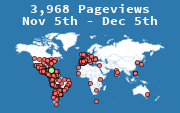Social and environmental Impact of the Scientific and Technical Advances in the Use of Antimicrobials
Keywords:
science, technology, socie, antimicrobials, resistance, therapeuticsAbstract
The therapeutic of transmissible diseases has evolved in history, they occupy the first causes of morbidity. The present article analyzes the social and environmental impact of the scientific and technical advances, in the use of antimicrobials. The objective is to argue the connotation of the advances of science and technology in the field of the antimicrobial therapeutic, for the environment. A contrasted analysis of the positive and negative influences of the advances, in the field of the antimicrobial therapeutic was carried out in data bases such as PubMed and Google Scholar, from January to October, 2021. The selection criteria were: articles with free access to whole text, published in Spanish and English, the copies of studies were excluded, and others of low scientific quality are evaluated through a critical and specialized reading. The indiscriminate use of antimicrobials conducts to the resistance and multi-resistance.
Downloads
References
,Bello-Fernández Z, Cozme-Rojas Y, Pacheco-Pérez Y, Mejías-Mayo C, Gallart-Cruz A. Resistencia antimicrobiana de Staphylococcus coagulasa positiva en cultivo de lesión en niños de Las Tunas. Revista Electrónica Dr. Zoilo E. Marinello Vidaurreta [Internet]. 2018 [citado 18 May 2023]; 43 (2) :[aprox. 12 p.]. Disponible en: https://revzoilomarinello.sld.cu/index.php/zmv/article/view/1277
Organización Mundial de la Salud[Internet]. Ginebra: OMS; c 2019[actualizado 31 Jul 2020, citado 18 May 2023]. Resistencia a los antibióticos. Nota de prensa. Disponible en: https://www.who.int/es/news-room/fact-sheets/detail/resistencia-a-los-antibi%C3%B3ticos
Serra-Valdes M. La resistencia microbiana en el contexto actual y la importancia del conocimiento y aplicación en la política antimicrobiana. Revista Habanera de Ciencias Médicas [Internet]. 2017 [citado 18 May 2023]; 16 (3) :[aprox. 17 p.]. Disponible en: https://revhabanera.sld.cu/index.php/rhab/article/view/2013
Ministerio de Sanidad, Consumo y Bienestar Social. Plan Nacional frente a la Resistencia a los Antibióticos (PRAN) 2019-2021 [Internet]. Madrid: Ministerio de Sanidad, Consumo y Bienestar Social; 2019. [citado 18 May 2023]. Disponible en: https://resistenciaantibioticos.es/sites/default/files/2022-04/pran_2019-2021_0.pdf
Resistance Map: The Center for Disease Dynamics Economics & Policy. Resistance Map: Antibiotic use[Internet]. 2019 [citado 7 Ago 2020]. Disponible en: https://resistancemap.cddep.org/AntibioticUse.php
Organización Mundial de la Salud[Internet]. Ginebra: OMS; c2019[actualizado 20 Sept 2017, citado 18 May 2023]. Informe mundial de la OMS sobre resistencia a los antimicrobianos.Disponible en: https://www.who.int/es/news/item/20-09-2017-the-world-is-running-out-of-antibiotics-who-report-confirms
Mo Y, Seah I, Lye PSP, Kee XLJ, Wong KYM, Ko KKK, et al. Relating knowledge, attitude and practice of antibiotic use to extended-spectrum beta-lactamase-producing Enterobacteriaceae carriage: results of a cross-sectional community survey. BMJ Open[Internet].2019[citado 18 May 2021];9(3):238-59.Disponible en: https://www.tropmedres.ac/publications/982156
Sociedad Española de Enfermedades Infecciosas y Microbiología Clínica (SEIMC). Registro hospitalario de pacientes afectados por las resistencias bacterianas[Internet]. Madrid:Seimc;2019[citado 18 May 2023].Disponible en: https://seimc.org/contenidos/noticias/2018/seimc-Registro_de_Pacientes_BMR.pdf
Gurbanovych Salmanov A, Yuriovych Vdovychenko S, Ivanovych Litus O, Ivanovych Litus V, Anatoliovych Bisyuk Y, Mykolaivna Bondarenko T, et al. Prevalence of health care−associated infections and antimicrobial resistance of the responsible pathogens in Ukraine: Results of a multicenter study (2014-2016). J Hosp Infect[Internet].2019 Ago[citado 18 May 2023];102(4):431-37.Disponible en: https://www.sciencedirect.com/science/article/abs/pii/S0195670119301124?via%3Dihub
semFYC[Internet].Barcelona: Sociedad Española de Medicina de Familia y Comunitaria (semFYC); © 1983-2023[actualizado 5 May 2017, citado 18 May 2023].Médicos de la Sociedad Española de Medicina de Familia y Comunitaria (semFYC) expertos en enfermedades infecciosas, a favor de la implantación de programas de optimización de antimicrobianos (PROA) en Atención Primaria. Nota de prensa. Disponible en: https://www.semfyc.es/prensa/semfyc-infecciosas-antimicrobianos-atencion-primaria-antibioticos/
Barlam TF, Cosgrove SE, Abbo LM, MacDougall C, Schuetz AN, Septimus EJ, et al. Implementing an Antibiotic Stewards hip Program: guidelines by the infectious diseases Society of America and the Society for Healthcare Epidemiology of America. Clin Infect Dis[Internet]. 2016[citado 18 May 2023];62(10):51-77. Disponible en: https://www.ncbi.nlm.nih.gov/pmc/articles/PMC5006285/
Lazovski J, Corso A, Pasteran F, Monsalvo M, Frenkel J, Cornistein W et al. Estrategia de control de la resistencia bacteriana a los antimicrobianos en Argentina. Rev Panam Salud Publica[Internet]. 2017[citado 18 May 2023];41:e88. Disponible en: https://iris.paho.org/bitstream/handle/10665.2/34093/v41a882017.pdf?sequence=1&isAllowed=y
World Health Organization. Worldwide country situation analysis: response to antimicrobial resistance[Internet].Geneva: World Health Organization;c2015.[citado 18 May 2023].Disponible en: https://apps.who.int/iris/bitstream/handle/10665/163468/9789241564946_eng.pdf;sequence=1
Fisterra[Internet]. Madrid: Fisterra© 2022. [actualizado 27 Jul 2017, citado 18 May 2023].Tratamiento empírico de las infecciones: utilización de antibióticos en situaciones especiales. Disponible en: https://www.fisterra.com/guias-clinicas/tratamiento-empirico-infecciones-utilizacion-antibioticos-situaciones-especiales/
Guitor AK, Wright, GD. Antimicrobial resistance and respiratory infections. Chest[Internet].2018[citado 18 May 2023]; 154(5):1202-12.Disponible en: https://www.sciencedirect.com/science/article/abs/pii/S0012369218309668?via%3Dihub
Downloads
Published
How to Cite
Issue
Section
License
Medimay protects copyright from the very first moment the submission is made, but upon publication it assumes a Creative Commons 4.0 (cc-by-nc) license, which allows the use of the work to share (copy and redistribute the material in any medium or format) and adapt (remix, transform and build from the material) as long as exclusive mention is made of the publication in the journal as a primary source, prohibiting its commercialization. The author always retains his/her right.















 This site is licensed under a
This site is licensed under a